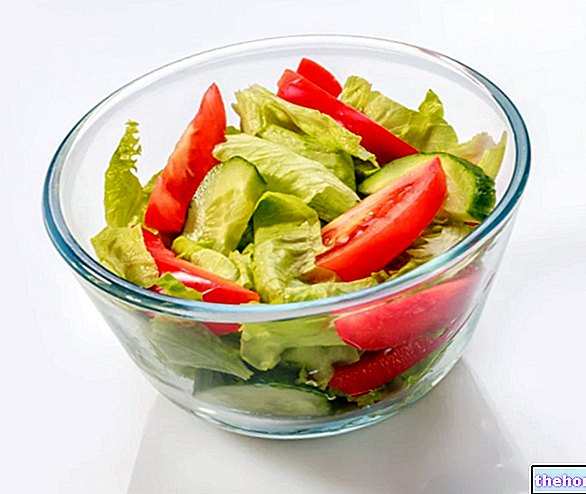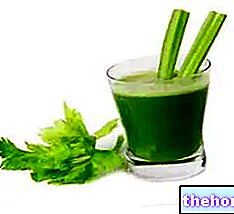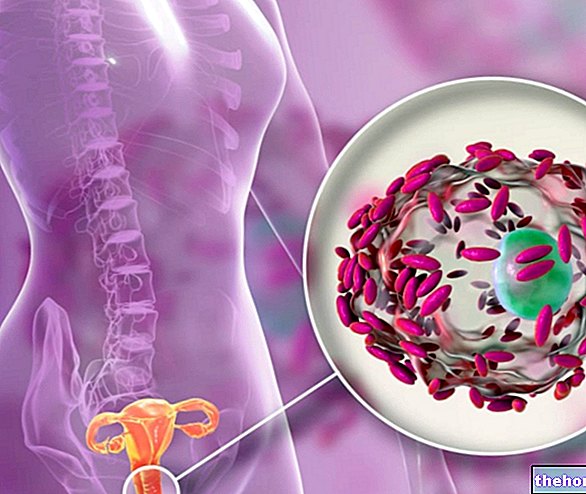Rheumatoid arthritis
Rheumatoid arthritis (RA) is a chronic autoimmune disease that affects the joints, which are swollen, painful, stiff and hot. The wrists and hands are most commonly affected (bilaterally). These rheumatoid arthritis symptoms they get worse with absolute rest.

The causes of rheumatoid arthritis are unclear and the disease is thought to be due to a combination of genetic and environmental factors.
The underlying pathophysiological mechanism involves the immune system, which attacks the joints. This results in inflammation and thickening of the joint capsule, also involving the bone and the underlying cartilage.
Diagnosis is made on the basis of signs and symptoms, by means of X-rays and laboratory tests.
Other diseases that can show similar symptoms are: systemic lupus erythematosus, psoriatic arthritis and fibromyalgia.
Treatment focuses on reducing pain and inflammation, and improving general function. From a pharmacological point of view, anti-inflammatories and antirheumatics are commonly used (to try to slow the progression of the disease). Surgery is used. only for the "repair" and replacement of severely damaged joints.
The incidence of rheumatoid arthritis is 0.5-1% in industrialized countries and it mainly affects women; the age of onset is that of middle-aged adulthood.
Diet and Motor Activity
As anticipated, rheumatoid arthritis is an idiopathic pathology that involves the activation of the immune system against the joint tissues. This means that currently there is no definitive cure, even if many behaviors have been observed that can improve symptoms and slow pathological progress; let's see which ones:
- Diet: To be sure, it is still uncertain whether certain specific dietary measures have a truly positive effect; on the other hand, there is a real dietary strategy aimed at reducing joint inflammation.
- Regular Exercise: Recommended for maintaining muscle strength and general physical function; on the other hand, exercise fatigue helps to decentralize attention from localized pains.
Despite the pain, it is strongly inadvisable to interrupt various occupational activities (of daily life).
Nutrients and Supplements
Among the various therapies, in addition to conventional medical practices, there are several systems defined as "alternative". It is a rather generic term that includes a wide range of interventions that are quite different from each other. Of all, the most scientifically relevant is food supplementation.
Omega 3 and GLA

Gamma linolenic acid is able to reduce joint pain, swelling and stiffness and is generally considered a safe product.
Medicinal Herbs
The American College of Rheumatology does not recommend the use of medicinal herbs, due to the absence of a solid enough scientific basis to demonstrate their safety and efficacy as a substitute for conventional drugs. Moreover, we remind you that certain medicinal herbs, even if classified as "natural", can be toxic or otherwise dangerous.
Based on preliminary positive results, they are still being tested (therefore, they are not yet recommended for clinical use): boswellic acid, curcumin, devil's claw, Euonymus alatu And Tripterygium wilfordii.
ATTENTION! The National Center for Complementary and Integrative Health (NCCIH) stated that the Tripterygium wilfordii (also known as "thunder god vine") can cause serious side effects.
There is also conflicting evidence on the role of erythropoiesis-stimulating agents (those also used to treat anemia, such as iron and folic acid) in people with rheumatoid arthritis.
Historically, the following have also been used (unsuccessfully) in the treatment of this pathology: apple diet, nutmeg, nettles, bee venom, rhubarb diet, fasting, honey, vitamins and insulin.
Foods for Arthritis
On the basis of the above, it is therefore possible to establish a range of foods that can be useful in the treatment of rheumatoid arthritis, ie those rich in certain fatty acids (EPA, DHA, ALA, AGL).
Foods rich in useful fatty acids are divided into two groups: of animal origin and of vegetable origin. Those of animal origin contain EPA (eicosapentaenoic) and DHA (docosahexaenoic), while those of vegetable origin contain alpha and gamma linolenic acid (the first an omega 3 and the second an omega 6); only algae also contain EPA and DHA .
The foods richest in EPA and DHA are fish that come from cold waters, krill oil and certain algae (which can be consumed as such or in the form of oil); among the fish we remember all the blue ones such as: tuna ( plus the ventresca of the fillet), swordfish, bonito, mackerel, lanzardo, garfish or saury, horse mackerel, sandeel, skullcap, herring, alaccia, sardine or sardine, anchovy or anchovy etc.
Cod, on the other hand, is a fish that has an "excellent percentage of EPA and DHA compared to other fatty acids but which, in an absolute sense, has a fairly low concentration of lipids.
On the contrary, salmon is rather fat, even if the percentage of EPA and DHA is very abundant especially in wild fish; those from breeding have a different chemical profile.
As anticipated, krill (from the Arctic seas) is rich in EPA and DHA, but its consumption occurs mainly in the form of oil as a food supplement; on the contrary, drawing inspiration from the oriental diet, the consumption of algae such as kombu is also spreading in the West. Again, certain oil or powder-based supplements (in capsules) are available on the market.
The foods richest in alpha and gamma linolenic acid are oil seeds and their oils. For alpha linolenic, the main sources are: kiwi, linseed, hemp, rapeseed, rape, walnut and soy seeds and oil.
For the linolenic range, on the other hand, the main sources are: blue algae (such as spirulina and klamath), seeds and oil of borage, evening primrose, black currant and hemp.
Harmful Foods
If it is true that some foods can favor the symptomatological reduction of rheumatoid arthritis, it is equally true that certain nutrients and an excess of body fat worsen the condition.
Obesity consists in an excess of body fat, which is stored mainly in the adipose tissue; the latter is not made of amorphous matter, but by cells that interact with the rest of the organism. Specifically, when they are too swollen and stimulated to develop, these cells secrete various molecules of an inflammatory nature that worsen the condition.
Chronic overeating, causing overweight, is an important risk factor for rheumatoid arthritis. Furthermore, the increased workload on painful joints can only aggravate painful symptoms.
It is also scientifically proven that alcoholic abuse negatively affects the disease, favoring its onset and worsening.
Furthermore, while omega 3 and GLA counteract the inflammatory tendency, other molecules are able to increase it. For example, an excess of linoleic acid (an essential omega 6) and above all of arachidonic acid, could be involved in the "blood increase of inflammatory prostaglandins; the experimental data supporting this hypothesis are quite controversial and, more than the quantity, they take in question the right relationship with omega 3.
The negative impact of saturated fats, on the other hand, is quite striking. These are debilitating both from a percentage and an absolute point of view. a negative effect on the metabolic parameters of inflammation.
Practical Tips
First of all, we remind you that, according to statistics, those who follow a Mediterranean diet (rich in vegetables, whole grains and legumes) have a lower risk of onset and severity for rheumatoid arthritis.
According to the previous chapter, increasing the EPA, DHA, ALA and GLA shares with diet may be able to reduce the severity of rheumatoid arthritis. However, not everyone is able to accurately structure their diet; this is why we will offer some useful guidelines for organizing a nutritional regimen for rheumatoid arthritis.
We begin by emphasizing that, before starting to take supplements, it is necessary to verify that the basic diet respects the principles of a healthy and correct diet.
As anticipated, the main sources of fatty acids useful for rheumatoid arthritis are: seeds and oils, oily or cold water fish, krill and oil, algae and oil. As for the portions, the frequency of consumption, storage and cooking, we will summarize the basic points below:
- Consume blue fish 2-4 times a week; portions should be between 150 and 250g.
- Use gentle cooking methods, without applying very high temperatures (eg NO to frying, YES to steam cooking). This is because polyunsaturated fats do not resist high temperatures and deteriorate easily, losing all metabolic functions.
- Consume oilseeds rich in ALA and GLA every day, but in addition to other recipes; for example, adding a tablespoon of flaxseed to breakfast cereals.
- Carefully select the oil seeds, making sure they do not contain too much linoleic acid. This essential polyunsaturated fatty acid belonging to omega 6 could have a negative effect if consumed in excess of omega 3. NOT all oil seeds are created equal! For example, prefer walnuts, flax seeds and hemp seeds.
- Strictly consume oils rich in omega 3 and GLA raw (as a condiment), making sure that they are obtained through cold pressing processes; it is important to keep them for a short time, in dark bottles and in the refrigerator.
- Include algae in the diet, even if it is "one-off".
- Use krill or seaweed based food supplements, establishing the dose with a specialist.
Furthermore:
- Eliminate alcohol.
- In case of obesity, restore the normal weight (weight loss diet).
- Consume fruit and vegetables daily (in all, at least 4-5 portions of 100-300g). These foods contain small amounts of essential polyunsaturated fatty acids and large portions of anti-inflammatory molecules such as: vitamin antioxidants (vitamin A, vitamin C and vitamin E), salines (zinc and selenium), phenolic antioxidants, chlorophyll, etc.
- Consume certain spices such as, for example, turmeric (which contains curcumin), curry etc., which may be able to oppose systemic inflammation.
- Compensate for the negative impact of certain drugs by ensuring that vitamins and minerals are potentially deficient. For example, with the use of corticosteroids it may be necessary to take food supplements that preserve bone mass (calcium and vitamin D).
Alternative Therapies
Although there is not enough scientific evidence to support the efficacy of the so-called alternative therapies, many subjects have found an advantage in following certain healing principles different from traditional medical therapy.
Some practices that affect the mind and / or body, as well as the nutritional supplement with dietary supplements, can help in reducing the symptoms of rheumatoid arthritis; some complement conventional treatments, but there is no scientific evidence that allows satisfactory conclusions to be drawn.
A 2015 systematic review of Complementary and Alternative Medicine (CAM) found that the data available to date do not justify the use of complementary therapies in the management of rheumatoid arthritis, with the exception of fish oil. opposite are called bias publications (unilateral and non-impartial) and are generally of low methodological quality.
Another older review states that low-intensity laser therapy can be used to decrease the perception of pain and morning stiffness caused by rheumatoid arthritis because, regardless of effectiveness, it has no noteworthy side effects.
There is also some evidence that Tai Chi (Chinese martial art) can improve joint movement ability in people with rheumatoid arthritis.
Acupuncture studies are inconclusive.
The "Colonna Prosorba" blood filtering device, aimed at removing IgG for the treatment of "rheumatoid arthritis, was approved by the" Food and Drug Administration "in 1999; however, it was suspended at the end of 2006.
Bibliography:
- Rheumatoid Arthritis and Complementary Health Approaches - National Center for Complementary and Integrative Health - July 1, 2015.
- Low level laser therapy (Classes I, II and III) for treating rheumatoid arthritis - Brosseau L, Robinson V, Wells G, Debie R, Gam A, Harman K, Morin M, Shea B, Tugwell P - Cochrane Database Syst Rev. 4: CD002049.
- Tai Chi in the treatment of rheumatoid arthritis - Han, Alice; Judd, Maria; Welch, Vivian; Wu, Taixiang; Tugwell, Peter; Pozzi, George A - Cochrane Database of Systematic Reviews.
- Medicinal herbs for the treatment of rheumatoid arthritis: a systematic review - Soeken, K L; Miller, SA; Ernst, E - Center for Reviews and Dissemination. National Institute for Health Research - March 23, 2013.
- Herbal remedies, supplements and acupuncture for arthritis - American College of Rheumatology - May 3, 2013.
- Erythropoiesis stimulating agents for anemia in rheumatoid arthritis - Martí-Carvajal, Arturo J; Agreda-Pérez, Luis H; Solà, Ivan; Simancas-Racines, Daniel - Cochrane Database of Systematic Reviews 2013 - 20 October 2014.
Other articles on "Rheumatoid Arthritis: Diet, Supplements, Alternative Therapies"
- Arthritis - Medicines for the treatment of Rheumatoid Arthritis
- Rheumatoid arthritis
- Rheumatoid Arthritis: Diagnosis
- Rheumatoid Arthritis: Treatment




























